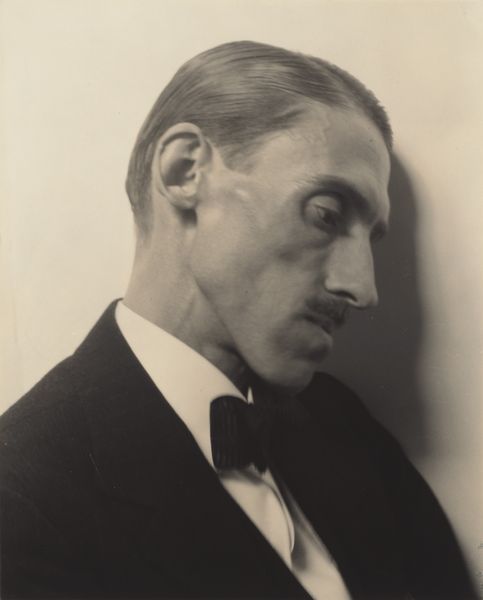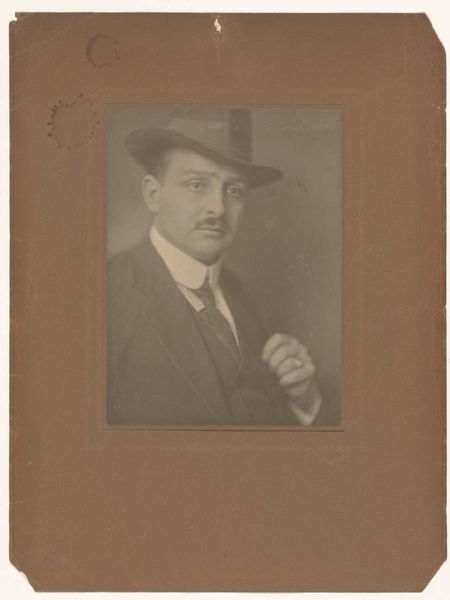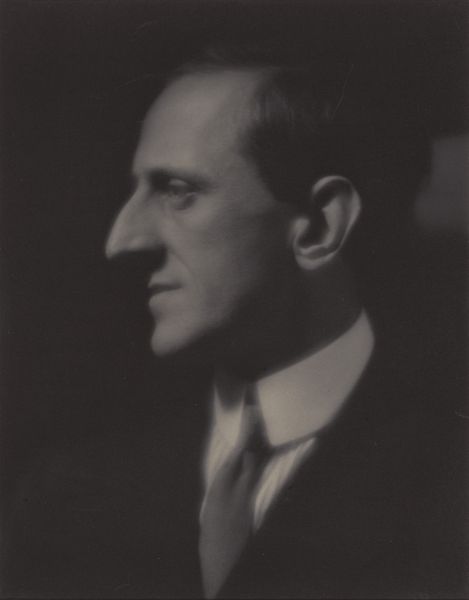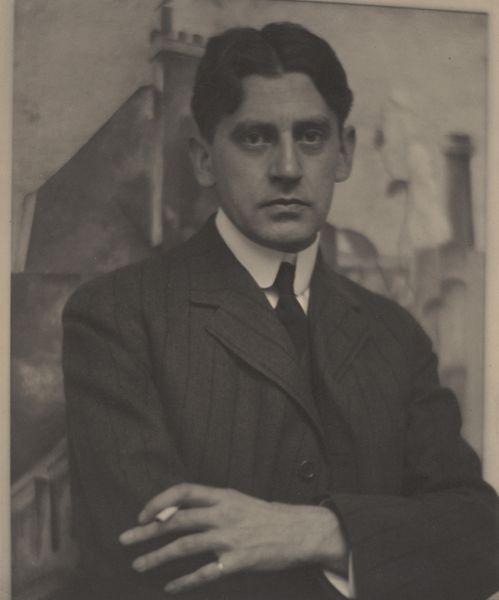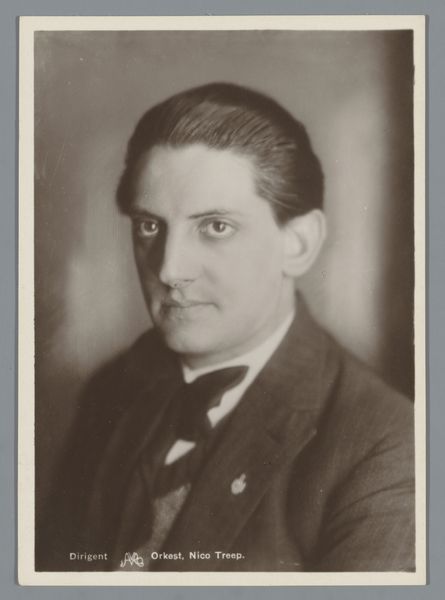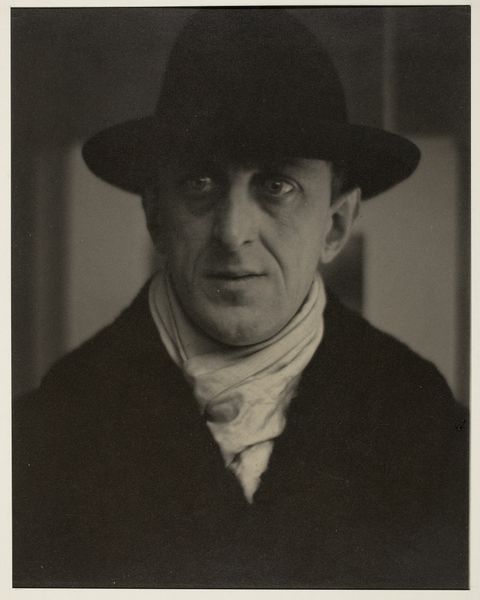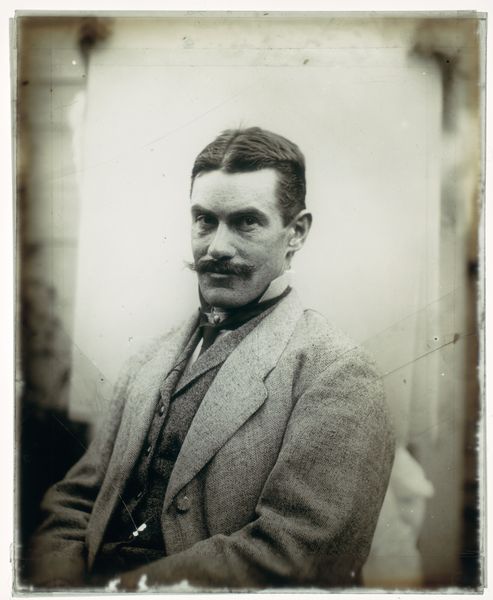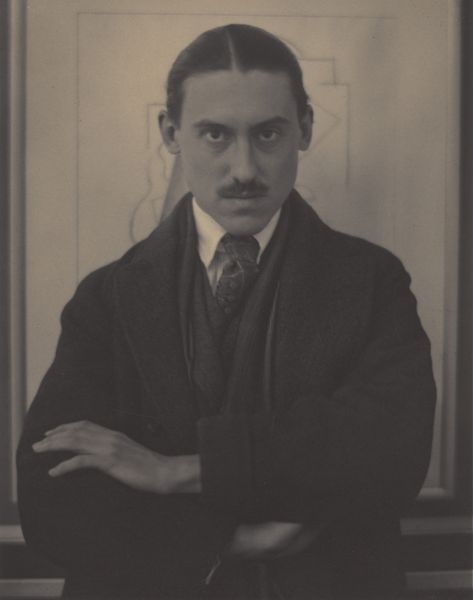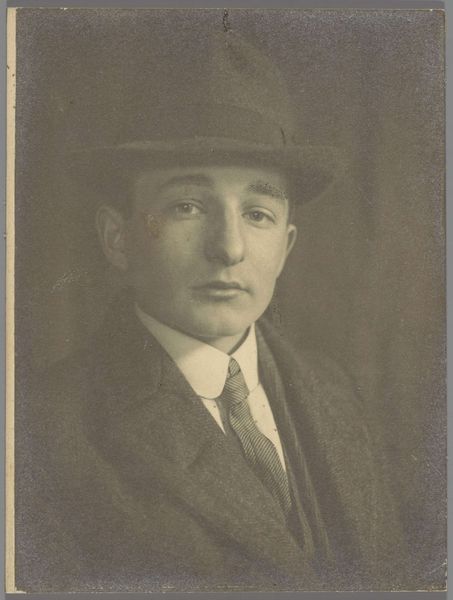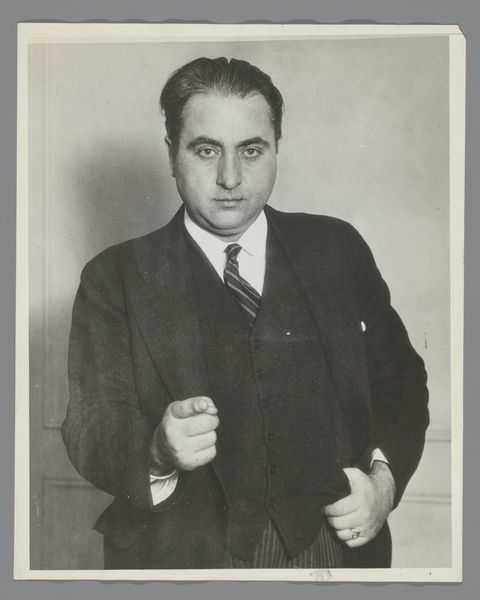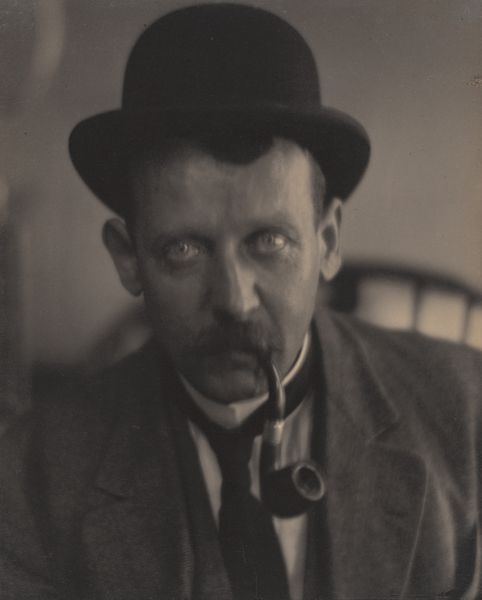
photography
#
portrait
#
art-deco
#
photography
#
realism
Dimensions: height 230 mm, width 178200 mm, height 215 mm, width 166 mm
Copyright: Rijks Museum: Open Domain
Curator: Up next, we have an intriguing photograph, “Portret van taxichauffeur Ray Rockwood,” created in 1924. It's an incredible example of early 20th-century portraiture, showing what seems to be a working-class individual. Editor: My immediate impression is one of austerity. The muted tones and the subject’s solemn expression create a rather somber mood. There’s a stark realism here that’s quite compelling, it seems like the image focuses mostly on lines and form rather than light and shadow. Curator: It certainly evokes a sense of seriousness. But consider the context – the burgeoning automotive industry and its impact on society. A taxi driver wasn't merely an employee; he was a symbol of a changing world. Editor: I see your point, yet I’m drawn to the sitter’s facial structure. The strong angles, the eyes... The artist really focused on geometrical simplification. The oval of the face in counterpoint with the cylindrical hat above his head... the semiotics are astounding! Curator: Perhaps. But consider the production, the labor of making and reproducing such an image at that time. It democratized image-making, allowing ordinary individuals like Rockwood to become subjects of artistic representation. And what did that mean for someone like him? This wasn’t some affluent patron getting his portrait done; this was documenting a social shift. Editor: That is well taken, and brings another level to the subject! Though, going back to the formalism, note the textured wool of his coat contrasting with the smoother material of his shirt. The dark against the lighter hat. Such perfect use of contrast to draw the eye directly toward his gaze. It's masterfully structured to command our attention. Curator: Exactly, a materialist reading reminds us that such artistic choices were affected by industrial advances, shaping perception, labor conditions, class identity, and image availability in profound ways. Editor: A perfect observation. So by looking at a moment frozen in monochrome, the social context of a burgeoning world and the use of formal compositional aspects are elegantly married.
Comments
No comments
Be the first to comment and join the conversation on the ultimate creative platform.
